I love XCOM. I came to it via the iPad, and played XCOM: Enemy Unknown on the couch, watching TV, on a plane, basically everywhere. It is, in my opinion, the best game available on the iPad except for the expansion, XCOM: Enemy Within, which significantly enriches its predecessor.
In the original XCOM, you manage a secret government military strike team dedicated to combating a slow alien invasion. The game has two dimensions: tactical, turn-based combat and team/base management, where you determine what facilities to construct, how to manage your budget, garner the support of critical allies, and balance your strategic goals against urgent missions, all against the backdrop of a ticking doomsday clock.
The drama, of course, comes from the customization, the leveling-up, and the difficulty. As characters survive missions, they are promoted through the ranks, given new abilities and stats. You grow attached to them, you choose thier weapons and upgrades, their color palette, psychic or cybernetic abilities, their name, codename, even their hairstyle (or hat/helmet). You come to rely on them, understand which are fast, which are lucky, which are good or bad shots, and which should close the deal with a sword. You come to rely on them. Then, in moments of high drama, they are inevitably killed, to be replaced with the next up-and-coming rookie. This can be heart-wrenching, especially if, like me, you try to keep the number of saved games to a minimum. (For you stalwarts, the Ironman mode disables the ability to save games entirely, but I don’t think I could take it, emotionally.)
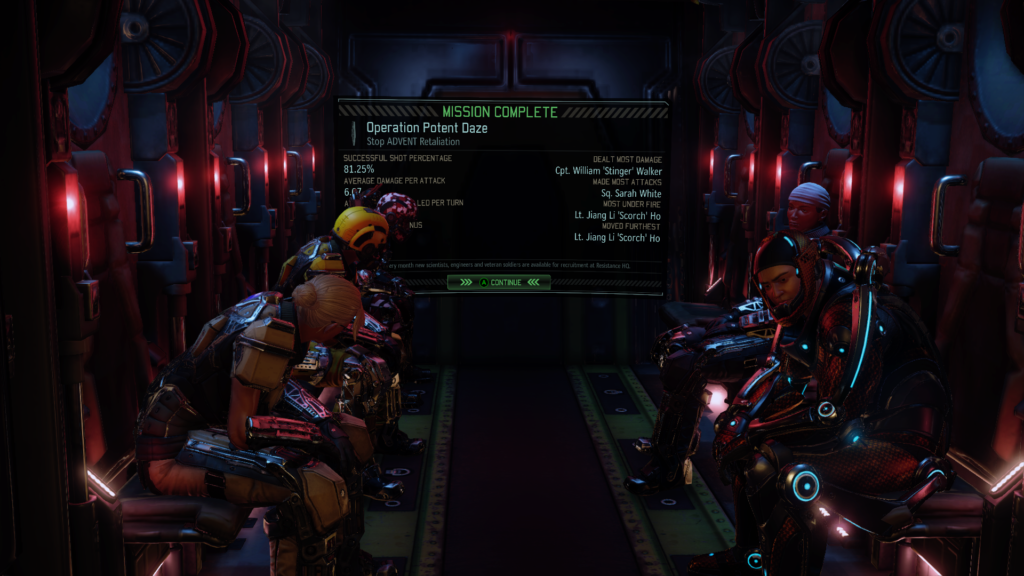
So, I’ve followed it closely and was thrilled when XCOM2 became available for XBox One (not yet on iPad, of course.) And now, XCOM2 has its own expansion advertised on social media: War of the Chosen.
One thing that wasn’t available when I first started playing XCOM2 was a tactical guide for beginners. I’m at best a very part-time gamer and don’t have a ton of experience with turn-based strategy, but XCOM is less about ground strategy– moving heavy units around a board, but more about small unit tactics. So I wrote this for people like me, bearing in mind that I expect these rules to continue to be perfectly serviceable to War of the Chosen.
Obviously, this guide will make no sense if you don’t play XCOM.
Here are the Basics, for new players:
- Thou Shalt Protect Thyself First.
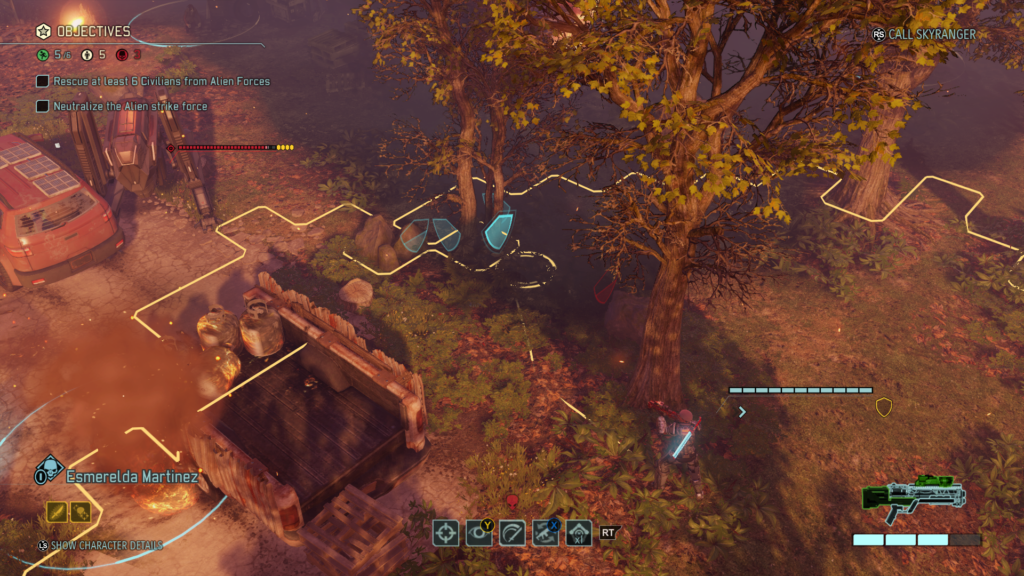
A Ranger opts for full cover. That means the primary goal of each turn should be to make sure the character is provided with the best cover available. That means even if you have a kill-shot lined up, take care of protecting yourself first, otherwise you’re just lining up someone else’s kill-shot. If it takes a few turns to put down the enemy, fine.
- Seek the High Ground, Seek the Flank.
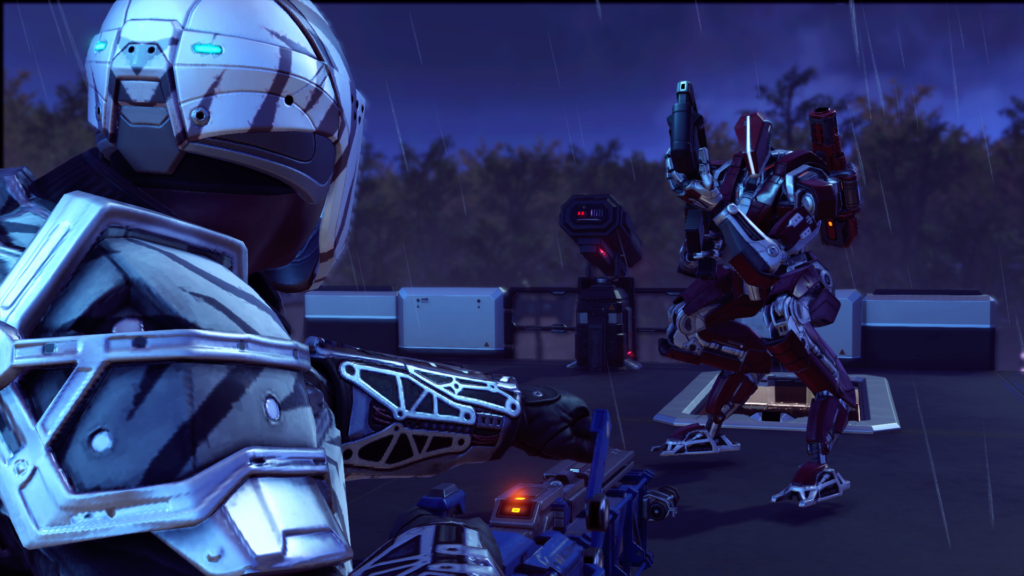
An enemy heavy MEC is successfully flanked by a grenadier. Look, your odds can increase by as much as 50%. Snipers should always be seeking high ground and should be as far away from the battle as is practical– use Spider Armor to help with this. Everyone should always be seekeing the flank. Seriously, the main point of the game is to flank your enemies. That’s really it.
- Don’t Follow Turn Order.One of the great features of XCOM’s turn-based combat is that anyone on the team can go first or last, there is no fixed order. That means although Frank is set to move next, you can defer Frank, and have everyone else move first, coming back to Frank’s move last.
This is your single most important move. Your most powerful weapon is your ability to determine when a turn is used, when a special weapon is deployed, when a movement is made, who gets the kill-shot. Always give kill-shots to rookies, where possible, so they can level up faster. Turn order is tyranny, and you don’t have to follow it.
- Watch Your Loadouts.
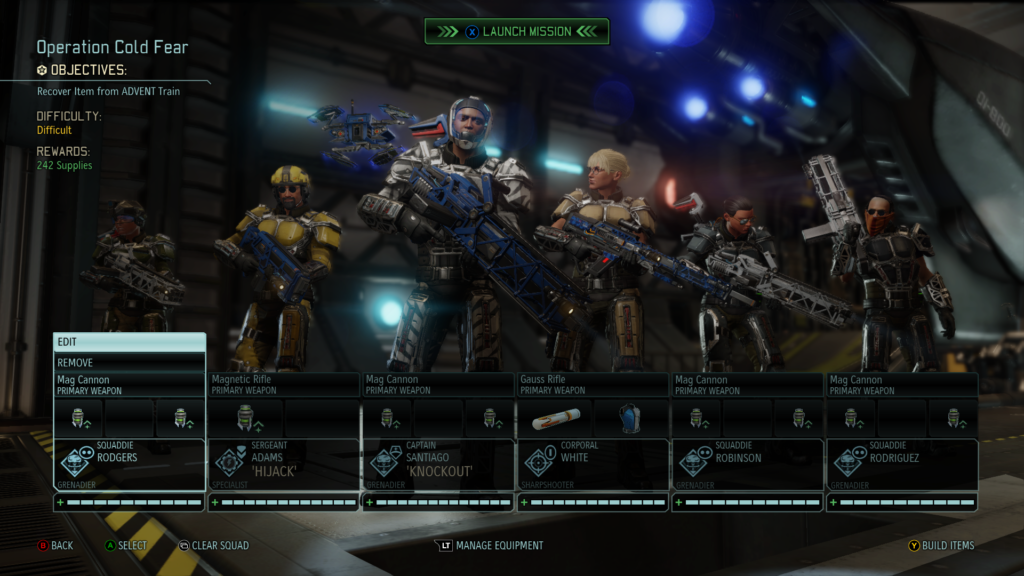
Preparing to choose the best loadouts for a mission. Loadouts should be catered to the objectives of the mission, and anticipate the enemies you expect to find. If you think there will be a Sectopod, a decoy will save your life. If you anticipate Vipers or Arachnids, you will be poisoned. Lots of robots? Heavy armor? Armor-piercing rounds. Pack accordingly.
- Stick Together.
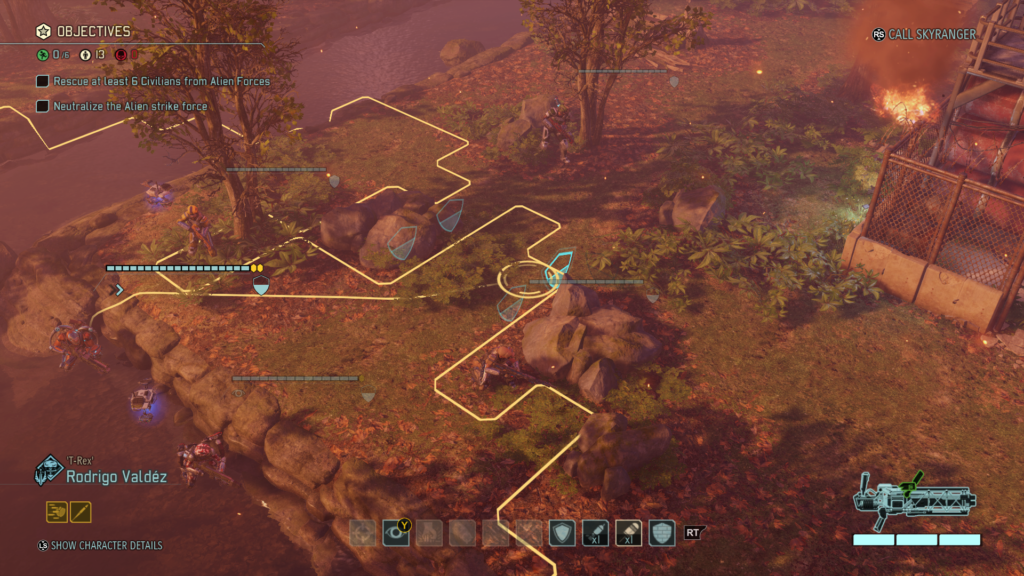
A tight squad grouping as the team moves toward the action. When you are moving across the board, keep the group tight. The single worst move you can make is to unintentionally reveal an enemy squad that you aren’t ready for. This can be avoided by moving tightly (and using battle scanners!). If you encounter enemies, stop moving. DO NOT press on beyond that point! Remember what the Navy SEALs say about swim buddies: two is one, one is none.”
- Recover friends and weapons. An advancement in XCOM2 is that wounded or unconscious friends can be carried. While it’s not usually useful to carry dead operatives, if it is possible in the constraints of time and distance, this is the only way to recover armor, weapons and utilities, which are otherwise lost for good. Carried soldiers limit the amount of actions you can take, but they don’t restrict your movement.
- Use the element of surprise.
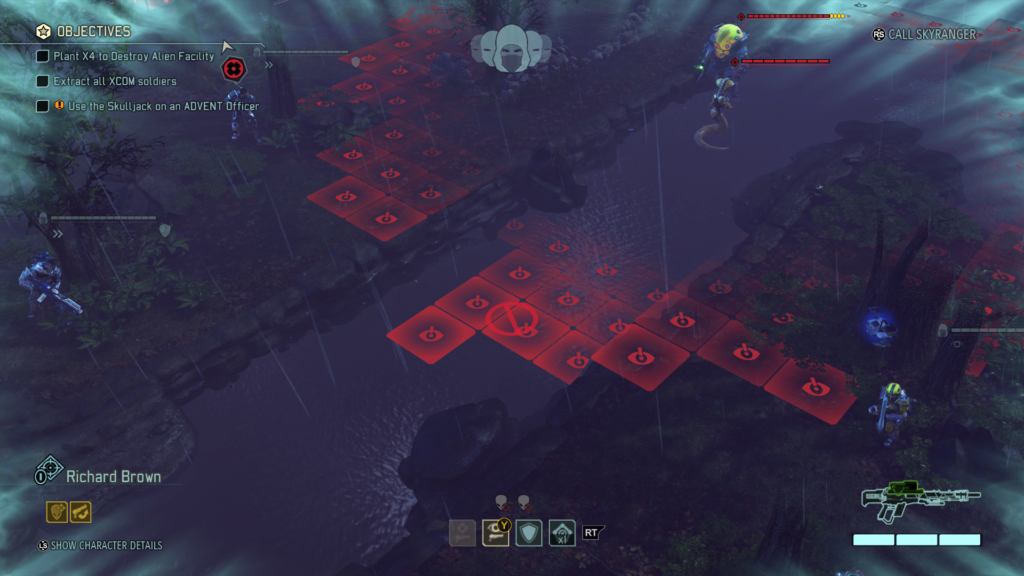
A Viper and an Andromedon are caught in a trap. When attacking an unsuspecting enemy, the attacking move should be the last move in the round. All of the previous turns should be to set-up the position of your squad (ideally a mix of flanking and elevated positions) and set their moves to “overwatch.” When the final shot is made, usually by a sniper, the enemies will run– triggering overwatch fire. With enemy squads of three basic enemies, this will often take out as many as two enemies, sometimes all three! Other enemy units are not necessarily notified, so if you kill all three, you are still concealed.
- Watch the Clock.
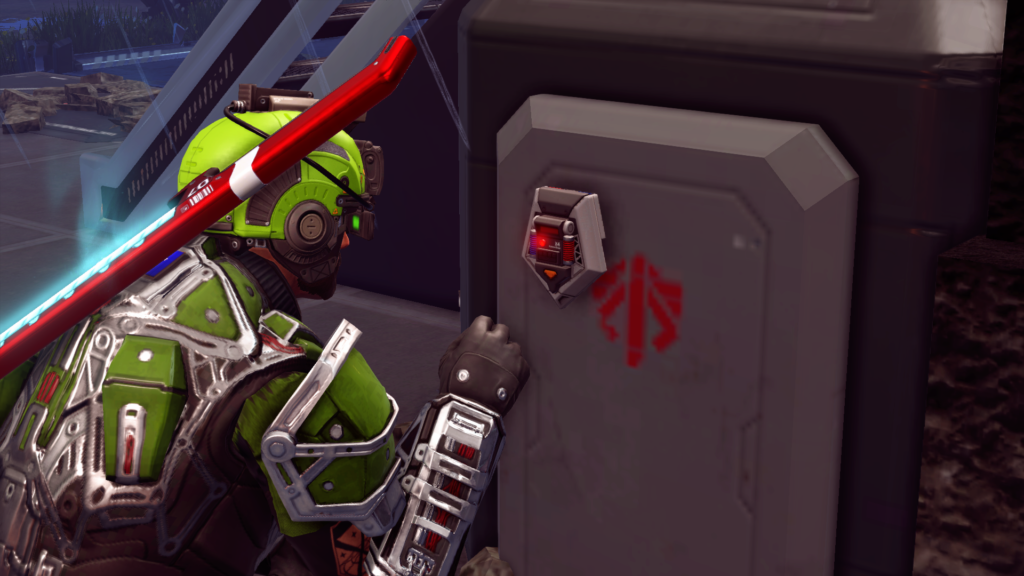
A ranger sets the explosive charges to complete the mission. Each game type (set the bomb, rescue/assassinate, retaliation strikes, protect the device, hack the device, etc.) have different rule constraints. Some types have a turn clock: 10 turns to accomplish this task, or something similar. You live and die by this clock. You should know how you plan to move, every single turn. However, do not let this feeling interfere in other game types: if you aren’t on the clock, take your time and position yourself as advantageously as possible.
- Know when to fight, know when to run.
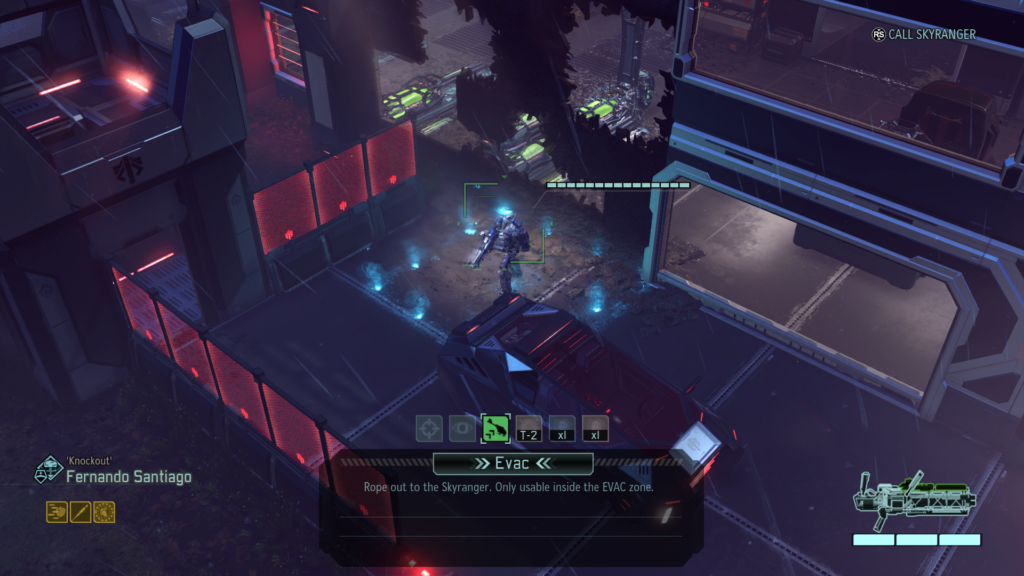
A grenadier opts for the better part of valor by evac’ing from the combat zone. Another typical rookie move is to think every battle has to be fought. Many battles will make obvious that this is not the case: look for time clocks or enemy reinforcements, which often signal that the point is not to win by killing all opponents– if you try, you will be killed. In many cases, reinforcements will keep coming every three turns or so. Get the message and complete the actual objective. A critical point is: learn how to call for evac. A good trick is to call for evac if a squadmate is certain to die within a few turns, such as by poison, or acid, and to just evac them. Come back to that planted evac point when the objective has been completed. Another good strategy is to send back wounded rookies who have been promoted but are likely to be killed. They will keep the promotion! Many objectives can be completed without securing the area. While the Mission is considered a “Failure,” the Objective is considered completed, and usually that’s all that is needed. (The Chairman will still be pleased.)
- Protect Your Veterans. This is so, so important. Rookies come and go. Squaddies come and go. But veterans represent a substantial investment of time and energy, they have significant battlefield advantages that Rookies can’t match, and they unlock squad bonuses in the Guerrilla Training School. So give the rookies the shit jobs. Put them in front. Make them prove themselves. And do your best to get your veterans off the field alive. You can’t do this all the time. You can’t even do it most of the time. But consider it a priority.
What are your best tactics? Share in the comments!
